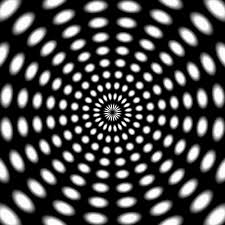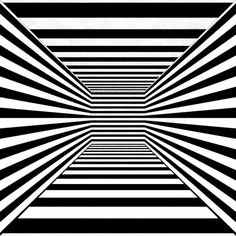|
LITR 4368 Literature of the Future |
Sample answers
for Essay 1:
|
 |
Brandon Burrow
Alien Contact, Ecotopias, and the “Other” Dimension
In both the Alien Contact
and Ecotopian stories that we have studied this semester human relationships and
the connections between an in group and an “other” group is omnipresent. The
motif of exploring our world through reflecting on cultural practices by
abstracting them as alien rituals is a recurring one in both Alien Contact
stories and Ecotopias. The course page on “Self & Other” identifies the
importance of the dialectic between the conventional in-group and the outsider
that is universally present in these stories (course page). The dialectic is
important because it “personalizes identity or values relative to other peoples
or entities” and appeals to “powerful human instincts of identity such as ‘us
and them’ or tribalism” (course page). In this
course content essay I will explore conventions of Ecotopian and Alien
Contact Sci-fi and how these genres use aliens or various surrogates for “the
other” to stimulate the reader to reflect on the oddities of human culture,
tribalistic practices, and the way we interact with each other and groups
foreign to us.
In
Ernest Callenbach’s short story “Chocco,” the conversation between the present
people of the ecotopian valley and their ancestors the “machine-people” is
rather one-sided due to the extinction of the machine-people whose story of
decline serves as the cautionary other in the tale (192-3). In the memory
recital test in “Chocco,” the winner Jon starts off by reminding his audience
“one thing we must keep uppermost in our minds: the Machine People were no less
intelligent than we are” insinuating that this culture must learn from their
mistakes as to not repeat them (193). A convention of ecotopia is to give a
“positive revaluation of ‘primitive’ human communities and individuals” rather
than viewing “earlier societies as backward and unenlightened” and Jon does this
in his recollections (course page). The downfall of the machine-people (who are
supposed to represent present-day humanity) is in the foolish ways they
squandered their resources and energies on activities such as war, wasteful
consumerism, ineffective politics, etc. True to ecotopian fashion, Jon
eventually wins the title of memory keeper because he more fairly depicts the
society of the other than Mikal does.
While technically a
low-tech dystopian scenario rather than an ecotopia, Octavia E. Butler’s “Speech
Sounds” depicts a world in which the survivors of a disease that stripped the
majority of humanity of the ability to speak or hear have to learn to
communicate again. In the story, Rye is weary of the distrust and violence
practiced by the masses, and her main motivation to keep living throughout the
story is ecotopian in that she wishes to find a human element in the apocalypse.
Rye is a character whose values aligns with the genre of ecotopia as she
possesses a desire for “human values like family, children, and local community”
to such a degree that she risks her life to establish contact with the children
she rescues at the end of the story (course page). In a world where the “only
likely common language was body language,” Rye essentially must labor to
establish first contact with the remnants of humanity on a rapidly devolving
Earth (96).
This need to establish a sense of
belonging and contact is also present in Alien Contact stories such as William
Gibson’s “The Belonging Kind.” The main character Coretti is versed in
linguistics and knows all about “conversational openings,” “but he could never
talk to strangers in bars or at parties” (para. 4). Like Rye, he feels like he
is an outsider among his own species and wishes to feel connected to people.
When he meets the beautiful alien woman at the bar, he feels acceptance in their
interaction. Classifying himself as a “martian dresser,” and an “outsider,” the
irony is not lost on him that a fringe member of society like himself should
make contact with an alien (para. 43). At the end of the story, Coretti and his
object of obsession sit at the bar and he finally is capable of genuine human
conversation, even though it is revealed that he is an alien himself (para.
90-8). The depiction Coretti as a human that is later revealed to be an alien
“other” serves to emphasize the strangeness that is present in human relations
and mating rituals, giving the reader pause to wonder what constitutes genuine
connection.
In contrast to most
ecotopian fiction, the other is often depicted as indecipherable in Alien
Contact stories as seen in Gibson’s “Hinterland.” The narrator of the story Toby
observes that “at the edge of Highway every human language unravels in your
hands except, perhaps, the language of the shaman, of the cabalist, the language
of the mystic” (7.2). This is reminiscent of the SF author Arthur C. Clarke’s
famous quote: “any sufficiently advanced technology is indistinguishable from
magic.” Language and interaction do not regress like they do in “Speech Sounds,”
but they are instead impossible, replaced by mysticism. Humanity has no idea
what is going on beyond the highway, and while they hope to understand it, the
contact they receive is both terrible and wonderful. On one hand of this sublime
contact, humanity receives a cure for cancer that would take scientists untold
years to work out for themselves, but on the other hand each cosmonaut comes
back trying to sabotage any link between humanity and the alien other, even at
the cost of their own life. Despite this ill omen, the call of the void attracts
us. The overwhelming human and literary appeal of contact and our inability to
resist it is relayed by Toby in his sentiment that “Olga [the first highway
traveler] must have known, must have seen it all, somehow. She was trying to
keep us from finding our way out there, where she'd been. She knew that if we
found her, we'd have to go. Even now, knowing what I know, I still want to go. I
never will” (8.6). Toby, as a surrogate for humankind, cannot rest until he has
established a connection with the unknown other and is certain of his place in
the universe.
In the “Poplar Street
Study,” the humans’ predisposition towards tribalism is evident as they are
quick to divide themselves in opposition to the aliens and assume only the worst
about their intentions, even attempting to resort to violence. The conflict
between the humans and aliens is necessary for the reader to understand what the
text is doing, and when they try to escape, “some irresistible force gently
pushed them back” (145). This force seems akin to the one that draws Toby to the
aliens in “Hinterland” as this story feels like an experiment with its reader in
which it shines a light on the alien behavior of humanity. The story serves as
an interesting look at the alien and tribalistic features that humanity
displays. Mrs. Desmond is quick to adopt strategies that associate her with
power, as she hopes to become the “one leader” of the block (148). Mrs. Desmond
hides food from her neighbors and attempts to solve the alien problem by
shooting them with her gun, making Mr. Anderson’s question to the aliens “‘Do
you imagine any part of the last few days has been normal for us?’” an effective
rhetorical device as the reader realizes, why yes, tribalism and violence is par
for the course for humanity (146. 152, 155). Despite the older generation in the
neighborhood’s ability to distinguish between the aliens, and their prejudiced
fear towards them, the aliens end up curing Mr. Anderson’s diabetes and creating
a new species that the neighborhood looked on as a “sort of Messiah” (158). Here
the beauty of the other is mixed with Mr. Anderson which suggests a superior
being in the union of alien and human, which also necessitates the destruction
of tribal barriers. It is only the newer generation led by Sunny who are willing
to accommodate change and acceptance of the alien other who are able to adapt to
the rules of the new world.
In Ursula K. Leguin’s
“Newton’s Sleep,” the interplay between humanity’s past and the possible future
is the primary conflict. The characterization of Ike as a purely rational man
who wants to forget about the earth essentially marks him as wanting his fellow
SPES members to become alien to the earth. He finds that this is not possible
when the crew members begin having hallucinatory visions of their homeland
aboard the space station. While his daughter is going blind, ironically, she is
the one who possesses the sight necessary to perceive the natural formations
that Ike, who assumes himself to have perfect logical vision, is unable to see
the images of primitive cultures and animals. Eventually Ike finds himself lost
in a place that he thought was perfectly constructed to be immune to
misdirection. Ignoring humanity’s past leads Ike astray in true ecotopian
fashion. By attempting to forget history and fighting to make the Spes people
alien to their own culture, Le Guin shows through the characterization of Ike
the folly of blind tribalism.
At its core, the Ecotopian
and Alien Contact stories we read this semester were exploring the importance of
interconnection to humanity and highlighting the dissonant practices that divide
it. Part of Science Fiction’s purpose is to not only entertain its readers, but
to serve as a model to understand the issues of the present day (course page).
These stories illustrate that the future is ever changing, and that adaptation
and mindfulness of our shortcomings is the antidote for apocalypse as well as
the key to living in harmony with ourselves and others. If we cannot understand
ourselves as a whole, then we cannot hope to understand the truly alien.


